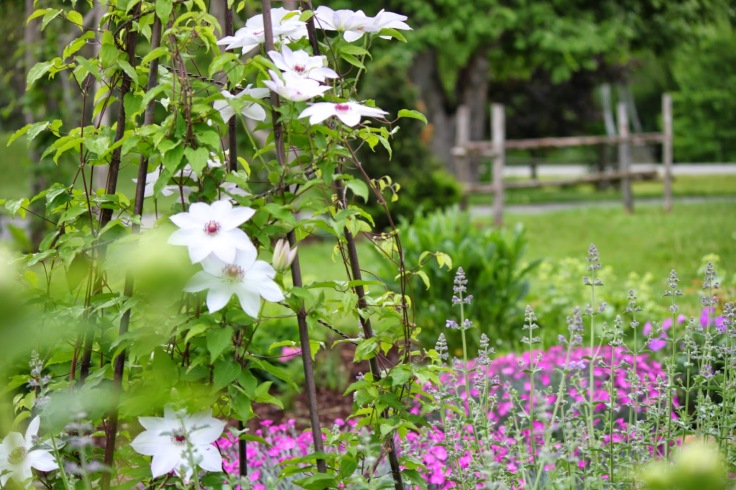“Winter Interest” is a term used among gardeners to describe the planting of trees, shrubs and perennials that will not only become the “bones” (i.e., structure) of the garden and provide interest in the frigid, snow-laden days of winter, but will also provide some nourishment and/or shelter for the local wildlife.
My gardens are young – heading into their fourth year this spring — and have far to go before they come close to the vision in my mind’s eye. By September of the second year, I realized that I had inadvertently created a garden that was a bit heavy on late summer/fall perennials. Although I also had a fleeting flash of color in early to late spring when the tulips, daffodils, lilacs and fruit trees bloomed, June was woefully underwhelming. So last fall and winter, I began planning and ordering perennials, vines and shrubs that are in bloom by June. I was moderately successful.

But what to do for the winter months when the foliage has browned or dropped altogether with the first hard frost, and the garden gradually becomes blanketed by snow? I think cold-climate gardeners fall into two camps: those that cut back all perennials before the first snow flies to eliminate this chore from the inevitable spring rush, and those that selectively prune and cut-back leaving certain perennials standing if they provide “winter interest.”
I fall into the latter camp. I don’t want to look out into the winter garden and see a flat, featureless landscape. So I leave select perennials standing, specifically those that provide seeds for birds and other wildlife. I have selected certain crab apple varieties and planted them along the wood line because they provide fruit for the deer. I have planted swathes of winterberry to provide berries for the birds, but also because I find the bright red berries against a sea of white snow visually stunning. I’ve also planted yews, dwarf spruce and grasses to the garden to add a touch of green and structure, but also because I love the look of the soft mounds they create in the snow.
![076[1]](https://wildlifegardenerblog.files.wordpress.com/2016/02/0761.jpg?w=736)
![071[1]](https://wildlifegardenerblog.files.wordpress.com/2016/02/0711.jpg?w=736)
![019[3]](https://wildlifegardenerblog.files.wordpress.com/2016/02/0193.jpg?w=736)

Leave a comment